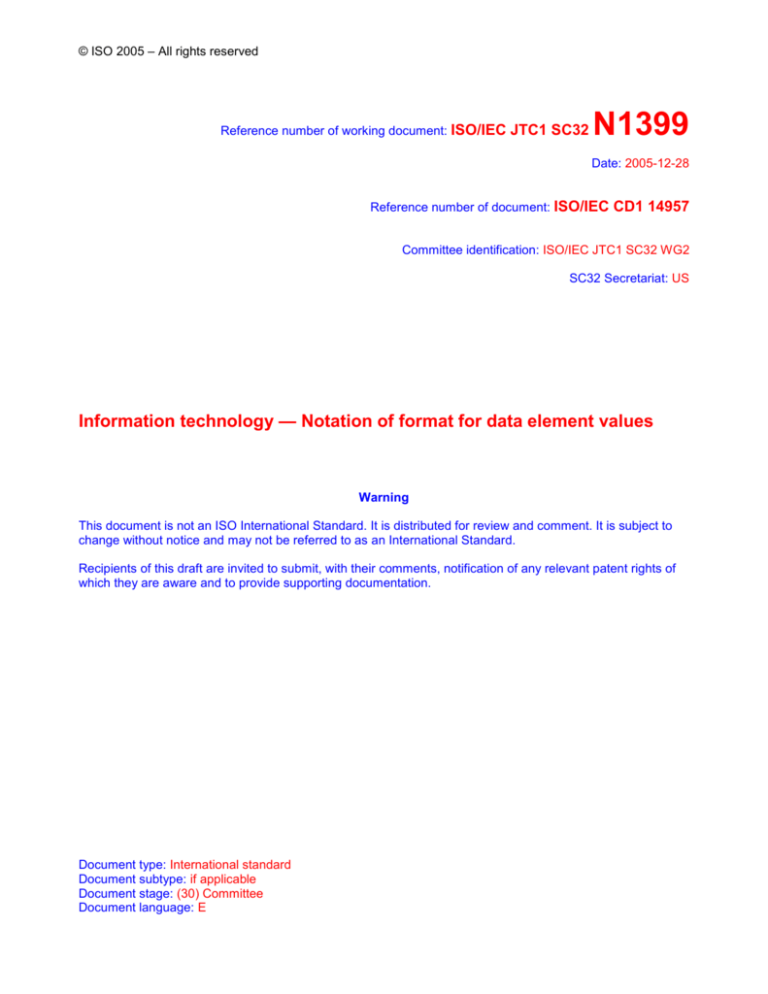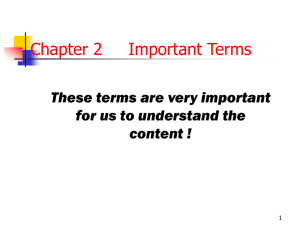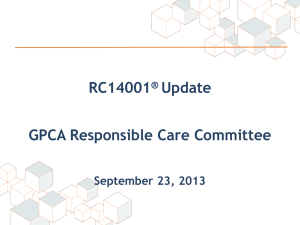
© ISO 2005 – All rights reserved
Reference number of working document: ISO/IEC
JTC1 SC32
N1399
Date: 2005-12-28
Reference number of document: ISO/IEC
CD1 14957
Committee identification: ISO/IEC JTC1 SC32 WG2
SC32 Secretariat: US
Information technology — Notation of format for data element values
Warning
This document is not an ISO International Standard. It is distributed for review and comment. It is subject to
change without notice and may not be referred to as an International Standard.
Recipients of this draft are invited to submit, with their comments, notification of any relevant patent rights of
which they are aware and to provide supporting documentation.
Document type: International standard
Document subtype: if applicable
Document stage: (30) Committee
Document language: E
ISO/IEC CD1 14957
Copyright notice
This ISO document is a working draft or committee draft and is copyright-protected by ISO. While the
reproduction of working drafts or committee drafts in any form for use by participants in the ISO
standards development process is permitted without prior permission from ISO, neither this document
nor any extract from it may be reproduced, stored or transmitted in any form for any other purpose
without prior written permission from ISO.
Requests for permission to reproduce this document for the purpose of selling it should be addressed
as shown below or to ISO’s member body in the country of the requester:
ISO copyright office
Case postale 56
CH-1211 Geneva 20
Tel. +41 22 749 01 11
Fax +41 22 749 09 47
E-mail copyright@iso.org
Web www.iso.org
Reproduction for sales purposes may be subject to royalty payments or a licensing agreement.
Violators may be prosecuted.
ii
© ISO 2005 – All rights reserved
ISO/IEC CD1 14957
Contents
Page
Foreword ............................................................................................................................................................ iv
Introduction ......................................................................................................................................................... v
1
Scope ...................................................................................................................................................... 1
2
Normative references ............................................................................................................................ 1
3
Terms and definitions ........................................................................................................................... 1
4
Clause xx ....................................................................................................Error! Bookmark not defined.
5
Conformance .............................................................................................Error! Bookmark not defined.
© ISO 2005 – All rights reserved
iii
ISO/IEC CD1 14957
Foreword
ISO (the International Organization for Standardization) is a worldwide federation of national standards bodies
(ISO member bodies). The work of preparing International Standards is normally carried out through ISO
technical committees. Each member body interested in a subject for which a technical committee has been
established has the right to be represented on that committee. International organizations, governmental and
non-governmental, in liaison with ISO, also take part in the work. ISO collaborates closely with the
International Electrotechnical Commission (IEC) on all matters of electrotechnical standardization.
International Standards are drafted in accordance with the rules given in the ISO/IEC Directives, Part 2.
The main task of technical committees is to prepare International Standards. Draft International Standards
adopted by the technical committees are circulated to the member bodies for voting. Publication as an
International Standard requires approval by at least 75 % of the member bodies casting a vote.
Attention is drawn to the possibility that some of the elements of this document may be the subject of patent
rights. ISO shall not be held responsible for identifying any or all such patent rights.
ISO/IEC 14957 was prepared by Technical Committee ISO/IEC JTC1, Information Technology, Subcommittee
SC32, Data Management and Interchange.
iv
© ISO 2005 – All rights reserved
ISO/IEC CD1 14957
Introduction
Data interchange is experiencing rapid expansion, in the commercial, technical and public sectors. It gives
rise to inter working between different communities which often have developed independently information
processing applications and telecommunication networks which meet specific needs. Hence an overall
situation which suffers from a lack of homogeneity.
In order to remedy this situation, an urgent standardization effort focused in particular on the representation of
data elements is necessary.
The representation of a data element supposes in the first place that the format, i.e. the type of characters
used in the representation and in the length of the latter is specified. So that these specifications have the
same significance for everyone involved, it is necessary to express them in accordance with standardized
conventions.
Such rules are likely to eliminate any and all risk of ambiguity, lack of understanding and error; they also
facilitate the comparison of data element dictionaries, the design and creation of information systems as well
as electronic data interchange (EDI).
These notations have been partially and variously expressed in different International Standards according to
the specific contexts in which they have been defined, e.g. EDIFACT (ISO 9735), Banking Standards (as ISO
7982-1), Character sets (ISO 8859), Information processing (ISO 6093), programming languages (ISO/IEC
9899).
Therefore, the objective of this International Standard is to provide a unique source of reference on this issue
for all Standards utilizing these type of notations independently of their environments.
© ISO 2005 – All rights reserved
v
COMMITTEE DRAFT
ISO/IEC CD1 14957
Information technology — Notation of format for data element
values
1
Scope
This International Standard specifies the notation to be used for stating the format, i.e. the character classes
used in the representation of data elements and the length of these representations. It also specifies
additional notations relative to the representation of numerical figures.
The scope of this International Standard is limited to graphic characters, such as digits, letters and special
characters. It does not specify usage of control characters.
2
Normative references
The following referenced documents are indispensable for the application of this document. For dated
references, only the edition cited applies. For undated references, the latest edition of the referenced
document (including any amendments) applies.
ISO/IEC 2382-04, Information technology — Vocabulary — Part 04: Organization of data
ISO 6093:1985, Information processing — Representation of numerical values in character strings for
information interchange
ISO/IEC 11179-3:2003, Information technology — Metadata Registries (MDR) — Part 3: Registry metamodel
and basic attributes
ISO/IEC 19773-001, Information technology — Metadata Interoperability and Bindings (MDIB) — Overview
3
Terms and definitions
For the purposes of this document, the following terms, abbreviations, and definitions apply.
3.1
data element
unit of data that is considered, in context, to be indivisible [ISO/IEC 2382-04:1999]
3.2
character set
finite set of characters that is complete for a given purpose [ISO/IEC 2382-04:1999]
3.3
character type
set of characters of the same kind or having the same use
© ISO 2005 – All rights reserved
1
ISO/IEC CD1 14957
EXAMPLE Letters, figures, special characters, etc.
3.4
length (of representation)
number of characters used to represent a data element
4 Notation relative to character types and length of representation of a data
element
The format shall be a characterstring sequence. The format is composed of zero or more directives: one or
more white-space characters, an ordinary character (neither % nor a white-space character), or a conversion
specification. Each conversion specification is introduced by the character %.
NOTE
This specification of formats is based upon the "fscanf()" function in the C programming language (ISO/IEC
9899:1999).
After the %, the following appear in sequence:
An optional assignment-suppressing character *.
An optional nonzero decimal integer that specifies the maximum field width (in characters).
An optional length modifier that specifies the size of the receiving object.
A conversion specifier character that specifies the type of conversion to be applied.
Each directive of the format is processed in turn.
A directive composed of white-space character(s) is executed by reading input up to the first non-white-space
character (which remains unread), or until no more characters can be read.
A directive that is an ordinary character is executed by reading the next characters of the stream. If any of
those characters differ from the ones composing the directive, the directive fails and the differing and
subsequent characters remain unread.
Similarly, if end-of-file, an encoding error, or a read error prevents a character from being read, the directive
fails.
A directive that is a conversion specification defines a set of matching input sequences, as described below
for each specifier. A conversion specification is executed in the following steps:
Input white-space characters are skipped, unless the specification includes a [, c, or n specifier.1
An input item is read from the stream, unless the specification includes an n specifier. An input item is defined
as the longest sequence of input characters which does not exceed any specified field width and which is, or
is a prefix of, a matching input sequence.
1 These white-space characters are not counted against a specified field width.
2
© ISO 2005 – All rights reserved
ISO/IEC CD1 14957
The first character, if any, after the input item remains unread. If the length of the input item is zero, the
execution of the directive fails; this condition is a matching failure unless end-of-file, an encoding error, or a
read error prevented input from the stream, in which case it is an input failure.
Except in the case of a % specifier, the input item (or, in the case of a %n directive, the count of input
characters) is converted to a type appropriate to the conversion specifier. If the input item is not a matching
sequence, the execution of the directive fails: this condition is a matching failure. Unless assignment
suppression was indicated by a *, the result of the conversion is placed in the object pointed to by the first
argument following the format argument that has not already received a conversion result. If this object does
not have an appropriate type, or if the result of the conversion cannot be represented in the object, the
behavior is undefined.
The conversion specifiers and their meanings are:
d Matches an optionally signed decimal integer, whose format is the same as expected for the subject
sequence of the strtol function with the value 10 for the base argument. The corresponding argument
shall be a pointer to signed integer.
i Matches an optionally signed integer, whose format is the same as expected for the subject sequence
of the strtol function with the value 0 for the base argument. The corresponding argument shall be a
pointer to signed integer.
o Matches an optionally signed octal integer, whose format is the same as expected for the subject
sequence of the strtoul function with the value 8 for the base argument. The corresponding argument
shall be a pointer to unsigned integer.
u Matches an optionally signed decimal integer, whose format is the same as expected for the subject
sequence of the strtoul function with the value 10 for the base argument. The corresponding argument
shall be a pointer to unsigned integer.
x Matches an optionally signed hexadecimal integer, whose format is the same as expected for the
subject sequence of the strtoul function with the value 16 for the base argument. The corresponding
argument shall be a pointer to unsigned integer.
a,e,f,g Matches an optionally signed floating-point number, infinity, or NaN, whose format is the same
as expected for the subject sequence of the strtod function. The corresponding argument shall be a
pointer to floating.
c Matches a sequence of characters of exactly the number specified by the field width (1 if no field width
is present in the directive). If an l length modifier is present, the input shall be a sequence of characters.
s Matches a sequence of non-white-space characters. If an l length modifier is present, the input shall be
a sequence of characters.
[ Matches a nonempty sequence of characters from a set of expected characters (the scanset).
The conversion specifier includes all subsequent characters in the format string, up to and including the
matching right bracket (]). The characters between the brackets (the scanlist) compose the scanset,
unless the character after the left bracket is a circumflex ( ^), in which case the scanset contains all
characters that do not appear in the scanlist between the circumflex and the right bracket. If the
conversion specifier begins with [] or [^], the right bracket character is in the scanlist and the next
following right bracket character is the matching right bracket that ends the specification; otherwise the
first following right bracket character is the one that ends the specification. If a - character is in the
© ISO 2005 – All rights reserved
3
ISO/IEC CD1 14957
scanlist and is not the first, nor the second where the first character is a ^, nor the last character, the
behavior is implementation-defined.
p Matches an implementation-defined set of sequences that represent a pointer.
converted to a pointer value in an implementation-defined manner.
The input item is
n No input is consumed.
% Matches a single % character; no conversion occurs. The complete conversion specification shall be %%.
5
Examples
The following are examples of the syntax.
EXAMPLE 1
The string "%d" corresponds to a decimal integer value such as 17, 0, -17, 017, but not 1.0, ABC.
EXAMPLE 2
The string "%03d" corresponds to a decimal integer value such as 017, 000, 017, but not 1000.
EXAMPLE 3
The string "%s" corresponds to a string value such as "abcd", "123", and "".
EXAMPLE 4
The string "%f" corresponds to a decimal real value such as 1.0, 1., -1.
4
© ISO 2005 – All rights reserved







